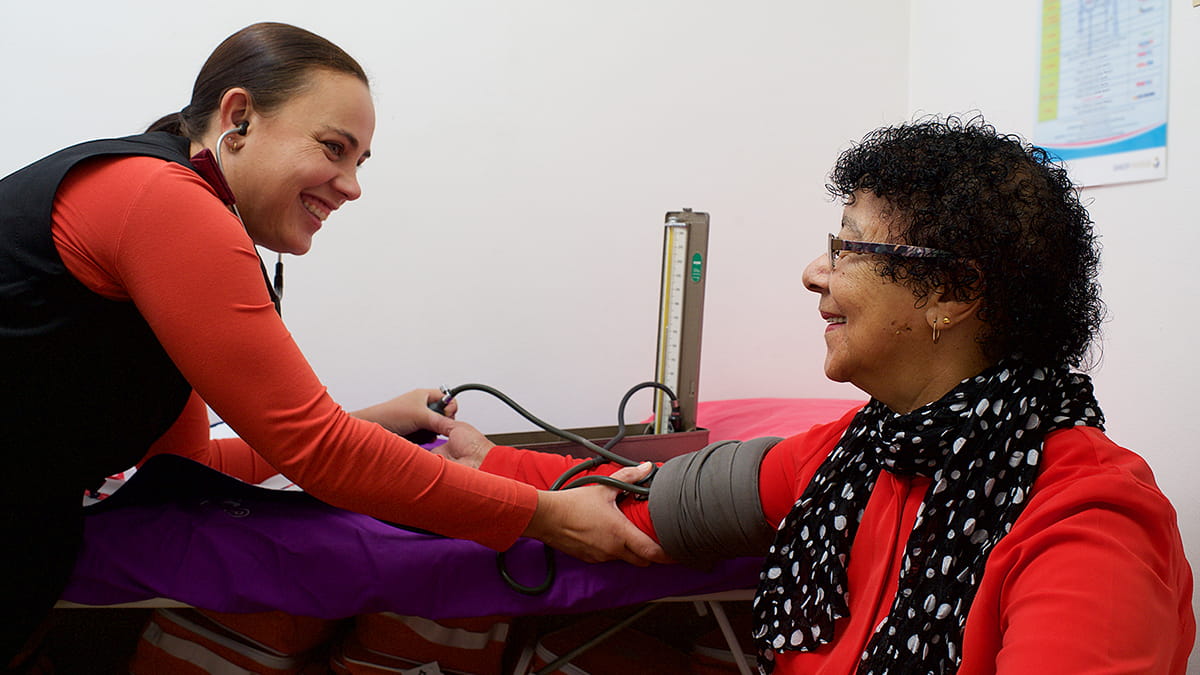Living with Heart Failure: A Comprehensive Care Management Program at Ohio State
 Heart failure kills 60,000 people in the U.S. each year and is expected to increase 46% by 2030, and is one of the most common reasons for hospitalization and readmission, according to the American Heart Association. Half of patients with heart failure die within five years of diagnosis. More than 25% of patients hospitalized for heart failure will be readmitted to the hospital within 30 days of discharge. While there is no cure for heart failure, clinical intervention has been shown to improve heart failure outcomes.
Heart failure kills 60,000 people in the U.S. each year and is expected to increase 46% by 2030, and is one of the most common reasons for hospitalization and readmission, according to the American Heart Association. Half of patients with heart failure die within five years of diagnosis. More than 25% of patients hospitalized for heart failure will be readmitted to the hospital within 30 days of discharge. While there is no cure for heart failure, clinical intervention has been shown to improve heart failure outcomes.
An Upper Payment Limit grant through OSU Physicians, Inc., has made it possible for The Ohio State University Wexner Medical Center to develop a comprehensive heart failure management program at Ohio State East Hospital. Now in its third and final year, the program has already seen improvements in patient health.
Under the direction of Brent Lampert, DO, FACC, associate professor - clinical of Internal Medicine at Ohio State, the program brings together a multidisciplinary team from across the hospital to assess, treat and monitor symptoms. Since opening in 2017, the heart failure clinic has experienced tremendous growth, including a doubling of clinic visits between year one and two. Additionally, for patients seen in the clinic following a heart failure hospitalization, the rate of readmission within 30 days is less than 10%, well below the national average.
The clinic provides close outpatient follow up, access to intravenous diuretics, coordination with a paramedicine program and specialized heart failure expertise in newly approved medications and advanced heart failure therapies. The clinic is led by Sara Thornburg, APRN-CNP, who works tirelessly to help patients modify behavior to reduce risk by providing self-management and nutrition education, medication management, referral to cardiac rehabilitation and the development of self-care action plans.
The program also assures smooth communication among care providers by educating emergency department, internal medicine and family practice groups about the resources of the heart failure clinic. With the goal of optimizing care and helping patients overcome some of the social determinants of health that negatively affect heart failure outcomes, the program works with East Hospital social workers, nutrition services and cardiac rehabilitation professionals.
“While an APRN-led heart failure clinic is not a novel concept nationally, this is the first of its kind for heart failure at Ohio State,” Dr. Lampert says. “It has been a tremendous success and will serve as a model for future heart failure care here.”



